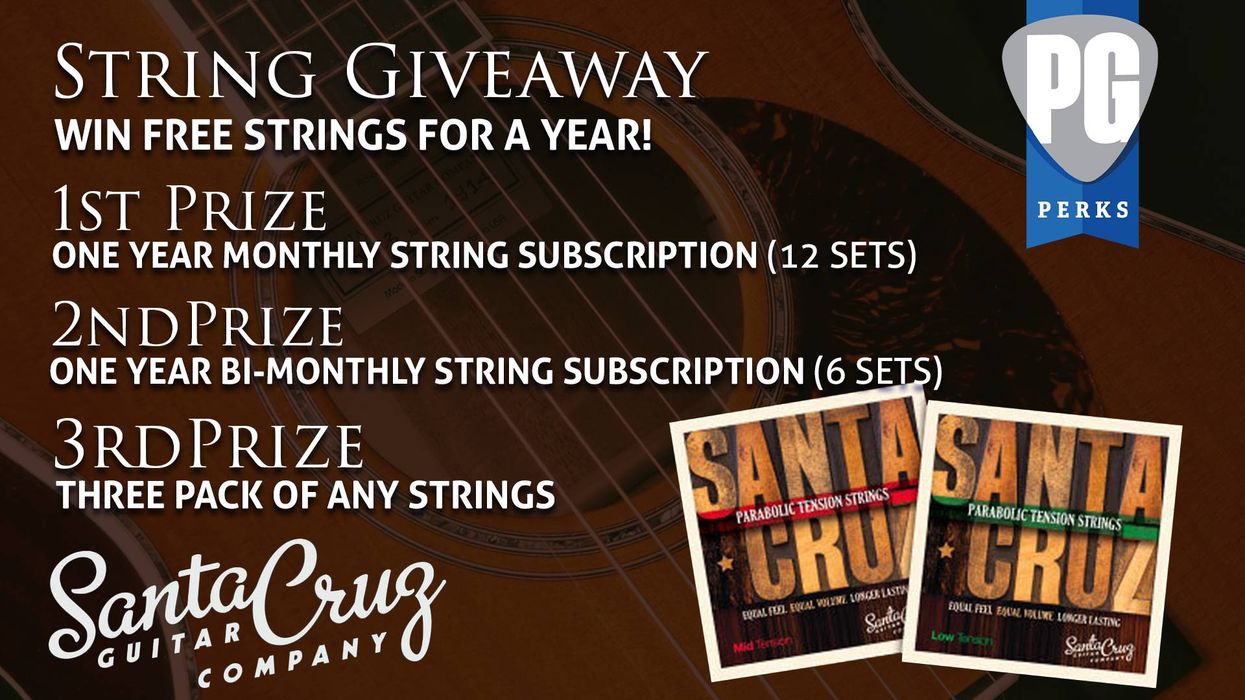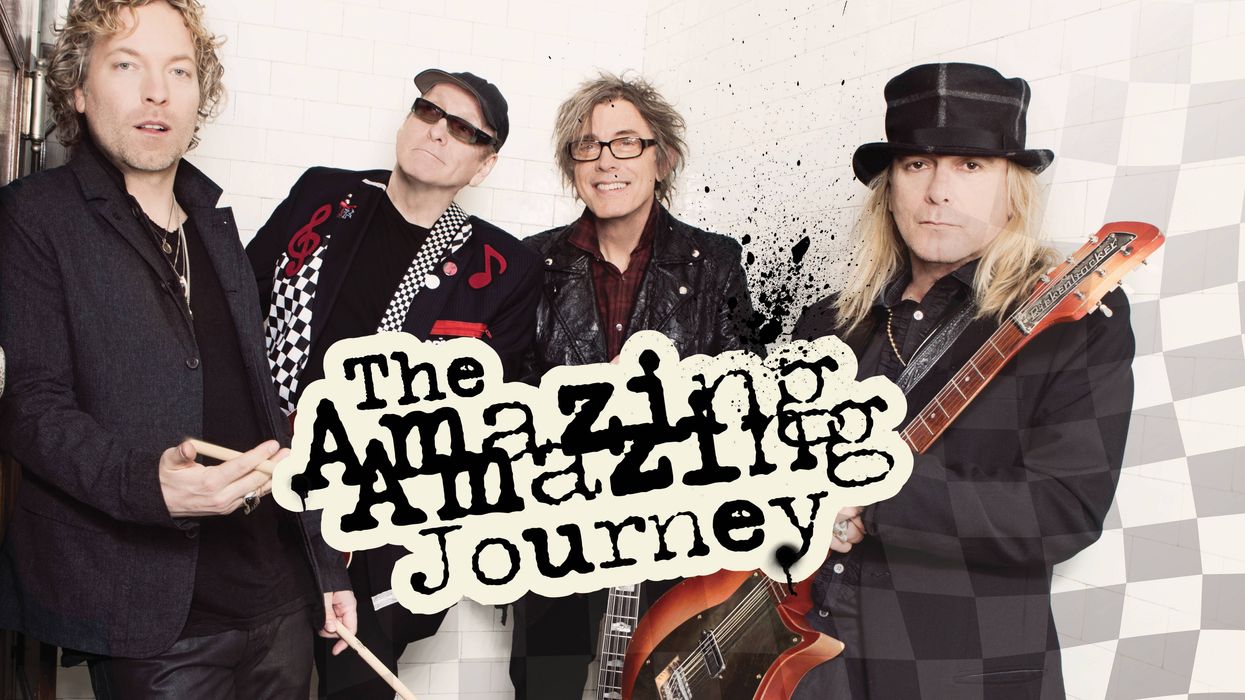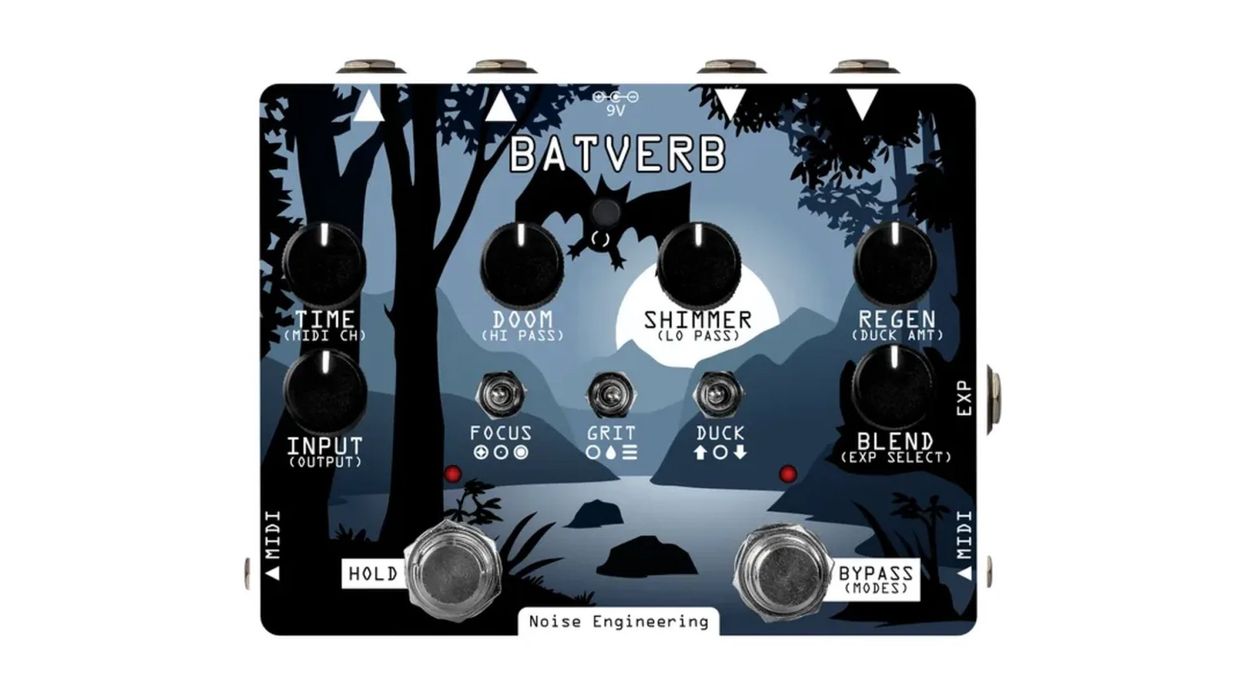| Download Example 1 Flatpicking, standard tuning | |
| Download Example 2 Fingerstyle, DADGAD | |
| Download Example 3 Capo | |
I talked to "Crazy Pete" Newport, Breedlove's president, about the concept behind the new Oregon-based Custom Shop and the company's new American Standard Series. "Three or four years ago that guitar cost around $3000," he told me. "When the economy went down, a lot of craftsmen in our area were out of work, so we decided we were going to do something to address that. We ended up turning the factory inside out. These are the only guitars in the country that are made 100% in the US, fully customizable, and made of highest quality woods at this price [$999 street]. How long can we do that? We put a lot of fine craftsmen to work, and we're going to try to make it last as long as we can, but we're kind of taking the world by storm at this point. We've been out of reach for a lot of folks, but now we're really looking for more friends." In other words, get 'em while they're hot.
She's a Brick House
Our review guitar, the C20/SM, is from the American Series, entirely handmade in the 40-person Breedlove Custom Shop in Bend, Oregon, and sticks to the very familiar modified hourglass we know and love so well. It has a concert-size body with solid mahogany back and sides, and a hand voiced, graduated Sitka spruce top. The guitar is pleasing to the eye, as well as extremely comfortable to hold. The one-piece mahogany neck is also comfortable with a 1-3/4" nut and a 25-1/2" scale length. The action is low, fast, clean, and fingerstyle friendly. The C20/SM has a pinless rosewood bridge, and like all Breedloves, comes standard with the JLD Bridge Truss System.
The ornamentation is plain and simple, and makes this already attractive guitar a stunner. The black body binding, abalone rosette, and clean, simple position markers are just right, and the asymmetrical headstock with rosewood overlay and Gotoh 381 tuners caps it off with customary Breedlove flair. The three asymmetrical elements—headstock, fretboard markers and bridge shape—work together perfectly to make this guitar a standout. A deluxe hardshell case is included, as well as Breedlove's Lifetime Warranty, adding up to a heck of a deal. More compelling still, the C20 doesn't feel at all like a "budget" guitar.
The Breedlove You Know
Breedlove's original sound comes, in part, from four sources. Newport explains that the Breedlove four-stage system starts with the neck. "We've changed the neck angle to kick back about one degree more, so you get nice low action but you're also getting more power to drive the top. So you've got the neck angle, the pinless bridge with the bridge truss as reinforcement, and then we really control how that energy gets released to the top, back, and sides by tweaking the bracing and graduating the tops. All those things working together led to the original Breedlove sound."
Breedlove graduates the tops by making them around .010" to .015" thinner than conventional tops on the bass side, and that much thicker on the treble side. "You really end up with a broad voice for each guitar, and a nice note balance up the neck and across the strings," says Newport. By reinforcing the bridge with the Bridge Truss System, Breedlove ended up with a stronger anchor point over the saddle. According to Newport, "The strings end up vibrating longer, which generates more sustain and allows more time to energize the top. This creates a nice bloom of tone. We call it the Breedlove Original Sound, or Complex Sustain."
The aforementioned pinless bridge is a JLD Bridge Truss System. JLD got started with their Bridge Doctor, a solution for stabilizing tops that have begun to collapse in front of the bridge. The folks at JLD noticed that installing their device altered a guitar's tone. The instrument sounded louder, bigger, and more brilliant, and developed more sustain, so they approached luthiers about installing the Bridge Doctor in new guitars as a way of enhancing their sound, as well as preventing those guitar beer bellies.
Breedlove was a very early adopter of the JDL Bridge Truss. Back in the early '90s, Breedlove was the repair center for Taylor, and got to see first hand how abused guitars could be restored and returned to full usefulness. "So, we played with it, continued to modify the guitar design to take advantage of that bridge truss, and it's become one of four major tonal attributes to the tops of our guitars," explains Newport.
Play that Thang
The C20 is a lively sounding little thing, brilliant as well as rich. It sounds great. In open tunings this guitar really sizzles, and it will drop down to a C-tuning without breaking a sweat, thanks to that nice long scale length. The tone has all the stuff you want: warmth, richness, clarity, and character. You can tell the woods are all solid, all high quality, and you can really hear the care and love that went into building this guitar.
There is a "but" here, though I'm not sure it's a bad thing. The treble really jumps out at you. I mean really jumps out at you. Like, "Holy moly, that's got high-end happening." It's not unpleasant, but wow, it's in-your-face on the treble side. And again, it's a great sounding guitar, and I'm not even remotely suggesting that it doesn't have bass, because it does. I mentioned that to Newport, and he said that it's likely I'm the first person to play that guitar, besides the folks doing the setup, so it's simply that brand-spanking newness I'm hearing. After a few days the treble will become more integrated into the overall sound. Using a capo seemed to balance out the high end, and didn't cause the guitar to choke.
The Final Mojo
Breedlove guitars are beautiful works of art, and the C20/SM offers extremely high value for the dollar. Elegant looking and easy to play, this brilliant sounding guitar is a solid contender in the new push for lower cost, high quality, professional-class instruments. Newport informed me that you can get an LR Baggs Active Element pickup installed for $200 more, and that makes the C20/SM a stage-stealer.
Buy if...
you want a brilliant sounding, professionally voiced, handmade guitar that doesn't feel, play, or sound "budget friendly," but is.
Skip if...
you love the darker side of the acoustic spectrum.
Rating...
Street $999 - Breedlove Guitars - breedlovemusic.com |










![Devon Eisenbarger [Katy Perry] Rig Rundown](https://www.premierguitar.com/media-library/youtube.jpg?id=61774583&width=1245&height=700&quality=70&coordinates=0%2C0%2C0%2C0)



